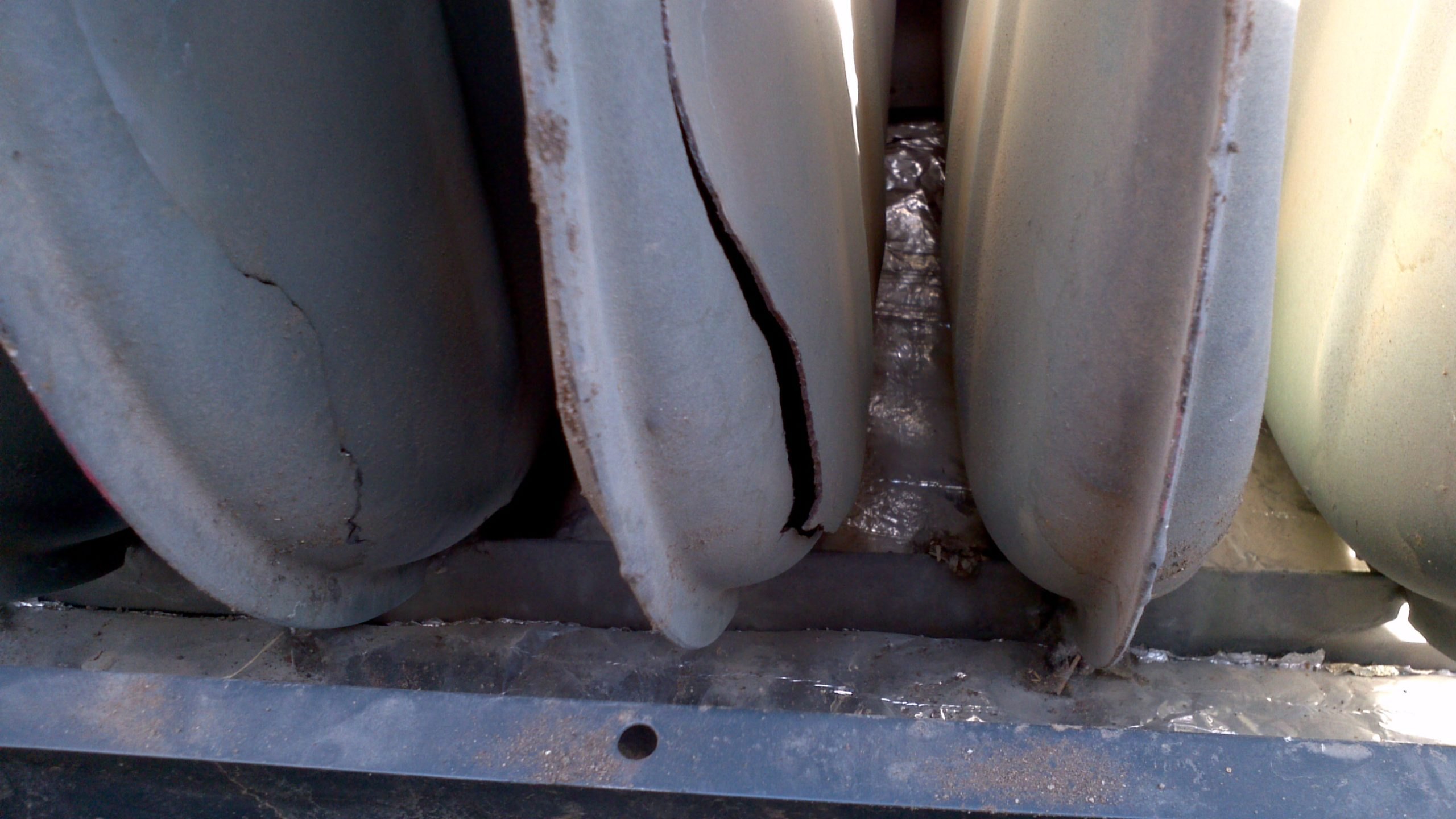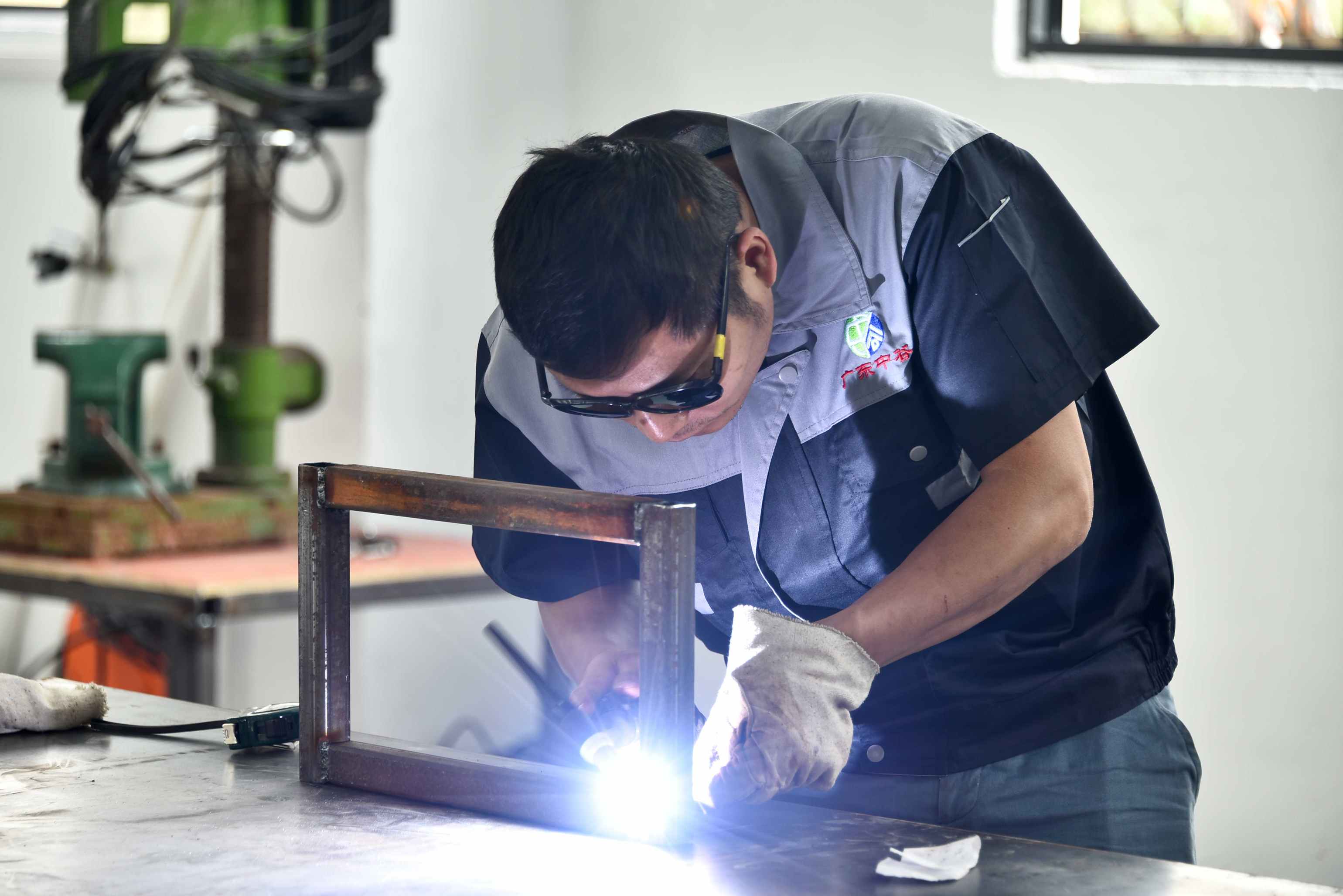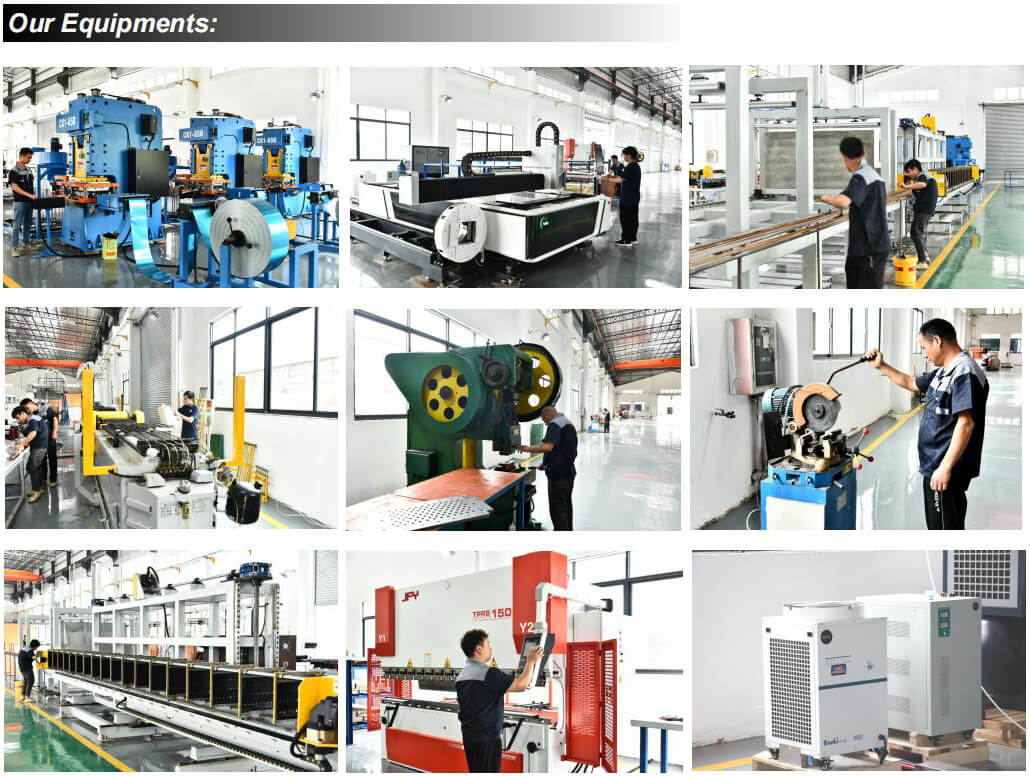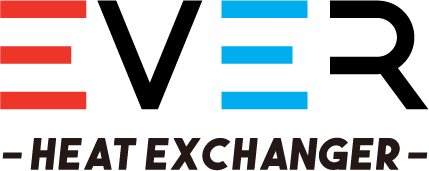2025 Customized Finned Heat Exchanger Cost Price Guide
Categories:News Author: author
Finned heat exchangers are essential components in a wide range of systems, from the heating and cooling units in our homes to the complex machinery in industrial plants. These devices efficiently transfer heat between a fluid, such as air or water, and a finned surface, maximizing heat exchange within a compact space. They are widely used in critical sectors such as HVAC, power generation, automotive, and petrochemicals, and are crucial for maintaining comfortable indoor temperatures and optimizing energy recovery in large-scale operations.
In 2025, understanding the complex cost breakdown of customized finned heat exchangers is more important than ever. The current market is dynamically influenced by multiple factors, including fluctuating raw material prices, evolving regulatory standards, and ongoing supply chain complexity. This guide aims to provide a comprehensive, professional, and highly readable analysis of these costs, offering clear guidance for both novice users and industry professionals. We will delve into the price of new equipment, the often-overlooked costs associated with cracks in finned heat exchangers, considerations for repair versus replacement, and the crucial labor cost. Everheatchanger goal is to equip you with the knowledge you need to make informed decisions and deliver cost-effective, high-performance solutions tailored to your specific finned heat exchanger needs.
Customized Finned Heat Exchanger Cost Estimates for 2025
The cost of a finned heat exchanger in 2025 is a multifaceted figure, influenced by its application, design, and current market conditions.
A. Price Range
Residential units are relatively affordable, parts typically cost a few hundred dollars, but full replacement with labor can exceed $1,000.
Industrial system have a wide price range, from small components under $100 to large custom solutions that may cost tens of thousands.
OEM parts are more precise and compatible with branded systems but tend to be pricier than generic alternatives.
|
Application Type |
Component/Type |
Price Range (USD) |
Notes |
|---|---|---|---|
|
Residential / HVAC |
Primary Heat Exchanger |
$350 – $850 |
Common in standard gas furnaces |
|
Secondary Heat Exchanger (Condensing) |
$300 – $800 |
Found in high-efficiency condensing systems |
|
|
Total Replacement (with labor) |
$1,250 – $3,000 (avg. $1,750) |
Includes parts and installation |
|
|
Industrial |
Small Finned Tube Assemblies |
$4.80/kg – $89.99/unit |
Used in small systems and cooling equipment |
|
Large Air Coolers / Kits |
$1,000 – $20,000 |
For power plants, refineries, heavy industry |
|
|
Custom / High-End Equipment |
$10,000 – $100,000 |
For specialized or high-performance systems |
|
|
OEM Parts |
Goodman / Amana |
$260 – $860 |
Standard replacement units |
|
Carrier / Bryant |
$350 – $800 |
OEM parts, typically priced slightly higher |
B. Key Customized Cost Factors of Finned Heat Exchangers
Several key factors directly impact the price of a finned heat exchanger:
|
Cost Factor |
Impact on Price |
|---|---|
|
Material Type |
- Stainless steel is more expensive than aluminum or copper. - In 2025, aluminum component prices increased 40–55% due to tariffs. |
|
Pressure Rating |
- High-pressure systems need thicker walls and stronger construction, raising material and labor costs. |
|
Fin Design & Density |
- Fins with complex shapes (e.g., louvered, spiral, elliptical, microchannel) improve performance but increase manufacturing cost. |
|
Customization |
- Custom designs require special engineering and unique materials, often adding a significant premium to the price. |
|
Furnace Size / BTU Rating |
- Larger capacity = larger components and more materials = higher cost. |
|
Furnace Age |
- Older systems may need extra labor or modifications, increasing total cost. |
|
System Type |
- High-efficiency furnaces with dual heat exchangers are more complex and costly to replace. |
|
Installation Accessibility |
- Hard-to-reach spaces (rooftops, crawl spaces, etc.) lead to higher labor costs and longer installation time. |
Tip: If you’re aiming for durability and performance in a tough environment, investing in better materials and custom design may be worth the extra cost.
C. Market Trends Impacting
Finned Heat Exchanger Costs in 2025 The economic and industry-specific environment in 2025 is leading to several cost-increasing trends
Inflationary Pressures: The HVAC industry, a major consumer of finned heat exchangers, is experiencing widespread price increases due to inflation. Major manufacturers have announced price increases of 4-10% for residential HVAC products and parts. The core Consumer Price Index (CPI) is projected to rise above 3% by the end of 2025, partly due to the impact of tariffs.
Supply Chain Disruptions: Persistent shortages of key components are leading to longer lead times and project delays. Geopolitical tensions, the impact of climate change on trade routes, and the scarcity of key resources, such as rare metals, are further complicating the supply chain, increasing costs and lead times.
Regulatory Changes: The mandated transition from high-global warming potential (GWP) refrigerants to lower-GWP alternatives is significantly impacting equipment prices and product availability. Manufacturers are increasing equipment pre-charges to reduce the need to add refrigerant on-site. Stricter environmental regulations are also driving the development of energy-efficient solutions, which may involve higher initial manufacturing costs.
Energy Costs: Rising natural gas and electricity prices directly impact the costs of energy-intensive manufacturing processes such as metalworking, which is critical to producing finned heat exchangers.
Customized Fin Heat Exchanger Crack Cost
Cracks in fin heat exchangers are a serious problem, especially in furnaces, as they can cause dangerous carbon monoxide leaks into your living or work space. Therefore, it's crucial to understand their causes, inspection methods, and associated costs.

A. Common Causes of Cracks
Cracks in fin heat exchangers are often caused by a combination of factors:
Age: Over time, the metal expands and contracts due to heating and cooling cycles, which can lead to fatigue and cracking.
Overheating: A dirty air filter can restrict airflow, trapping heat inside the heat exchanger and subjecting it to significant pressure, a common cause of cracks.
Improper Furnace Size: An oversized furnace can cause frequent "short cycling" (rapid opening and closing), causing the metal to expand and contract rapidly and increasing stress over time.
Moisture Corrosion: Exposure to moisture can cause corrosion, weakening the material and making it more susceptible to cracking.
Lack of Maintenance: Lack of regular maintenance can exacerbate these problems and lead to premature failure.
B. Inspection Methods and Costs
Detecting cracks in finned heat exchangers often requires specialized techniques beyond simple visual inspection.
|
NDT Method |
Technology Principle |
Application / Key Features |
|---|---|---|
|
Eddy Current Testing (ECT) |
Electromagnetic induction |
Used for detecting surface and near-surface cracks in conductive materials |
|
Remote Field Testing (RFT) |
Electromagnetic field propagation |
Suitable for detecting flaws in thicker-walled tubes; ideal for tubular heat exchangers |
|
Near Field Array (NFA) |
Multi-sensor array + signal analysis |
Optimized for aluminum finned tubes and ferromagnetic exchangers; fast and reliable defect detection |
|
Ultrasonic & Laser Methods |
Sound wave propagation / Laser scanning |
Complementary to electromagnetic methods; effective for deep or complex geometry inspections |
Historically, inspection costs were very high, but improvements in inspection equipment manufacturing capabilities and increased demand for services have helped reduce these costs over the past decade. While the specific costs of these advanced methods are not widely published, they are part of a comprehensive evaluation.
Limitations of Visual Inspection: Microcracks are often not visually identifiable without disassembling the equipment, which can result in downtime and risk damage to seals and plates.
C. Direct and Indirect Costs of Crack Damage
The costs associated with cracked finned heat exchangers extend beyond the immediate cost of repair.
Direct costs, or the cost of directly replacing the finned heat exchanger: For residential furnaces, HVAC technicians typically do not repair cracked heat exchangers due to safety concerns; replacing the part is the most common "repair" method. The average cost of such a replacement is $1,000 to $3,000.
Indirect costs include: Safety risk: The most critical indirect cost is the potential mixing of combustion byproducts (such as carbon monoxide) with the air circulating within the building. These byproducts are toxic and can be fatal in high concentrations.
Reduced Efficiency: Cracks can impair the efficiency of the heat exchanger, leading to higher energy consumption and increased utility bills.
Downtime: For industrial applications, cracked finned heat exchangers require system shutdown, resulting in costly production downtime.
Customized Finned Heat Exchanger Repair Costs
When a finned heat exchanger fails, the decision between repair and replacement is crucial, balancing immediate costs with long-term reliability and safety.
A. Repair or Replace?
Key Decision Criteria This is a common dilemma, especially for residential equipment
Furnace Age: If a residential furnace is less than 10 years old and has no other major issues, replacing only the heat exchanger may be cost-effective. However, if the furnace is older, a full furnace replacement, typically costing $2,000 to $5,400, may be a better investment, as other components will soon fail.
Cost Comparison: Compare the cost of repair (i.e., replacing the entire heat exchanger) to the cost of a new furnace. If the repair cost approaches or exceeds the cost of a new furnace, replacement is generally recommended.
Warranty Coverage: Most heat exchangers offer a 10- to 20-year warranty, which typically covers parts only and not labor. This means that even if the parts are covered under warranty, you may still incur high labor costs. Safety Hazards: HVAC technicians typically recommend replacing cracked heat exchangers rather than repairing them, as carbon monoxide leaks present a serious safety risk.
B. Repair Methods for Finned Heat Exchangers
While complete replacement is common for cracked residential units, other repair methods exist for various finned heat exchanger issues, especially in industrial settings:
Cleaning and Descaling: Removing dirt, scale, and other deposits can restore heat transfer efficiency. This can involve mechanical, chemical, or thermal methods.
Welding and Patching: For leaks or minor cracks, welding or patching may be used if safety permits and structural integrity is not compromised.
Replacing Damaged Parts: This involves replacing individual tubes or components such as baffles, gaskets, and nozzles.
Removing and Re-Tubing: For finned fan air-cooled heat exchangers, this involves removing the old tubes and installing new ones.
Gasket Resurfacing: Repairing corroded or worn gasket surfaces typically involves welding and reworking. Tube Re-expansion: Re-expand the existing tube-to-tubesheet joint to restore seal integrity.
C. Estimated Repair Costs in 2025
Residential: A cracked heat exchanger "repair," typically meaning replacement parts, costs between $1,000 and $3,000.
Industrial: While the specific repair cost for an industrial finned heat exchanger varies depending on the extent and complexity of the damage, major repairs requiring specialized welding or refabrication can exceed $5,000. Minor repairs, such as a blocked tube, may cost $500-2,000.
Customized Finned Heat Exchanger Replacement Labor Costs

Labor costs are a significant component of the total cost of replacing a finned heat exchanger, often exceeding the cost of the part itself.
A. Labor Rate Factors: Skill, Region, and Urgency Hourly Rate: HVAC technicians typically charge between $50 and $150 per hour. Some sources indicate rates of $75 to $125 per hour, and many companies have a minimum service fee.
Regional Variations: Labor rates and material prices are generally higher in urban areas than in rural areas.
Installation Complexity and Accessibility: Installations in confined areas, at high altitudes, or for complex, high-efficiency equipment can increase labor time and costs.
Urgency: Emergency or after-hours calls may incur a surcharge, typically adding $140 to $210 per hour to the standard rate.
B. Time Estimates by System Type Residential Furnace Replacement: Most residential heat exchanger replacements take four to eight hours. Some estimates indicate five to eight hours, depending on furnace size, accessibility, and location. The extensive disassembly and reassembly of the furnace's internals contributes to the time-consuming process.
Industrial Systems: Time estimates for industrial finned heat exchanger replacement vary significantly based on the system's size, complexity, and integration into larger processes. Large or rooftop units will naturally require more time and specialized equipment.
C. Total Installation Replacement Cost
The total installation cost includes the heat exchanger equipment, labor, and any additional expenses.
Residential: The average total cost of replacing a residential finned heat exchanger is $1,750, with a typical range of $1,250 to $3,000. This includes parts, labor (averaging $650 to $2,150), and possible other expenses.
Industrial: For industrial applications, the total installed cost of a heat exchanger can range from $5,000 to $15,750 for a steam system. For new process heat exchangers, prices typically range from $5,000 to $75,000, with larger or more advanced models at the higher end of this range. Labor costs for complex industrial installations can range from $130,000 to over $390,000, depending on the complexity and system capacity. Additional costs to consider include: Permit Fees: Some municipalities require permits for heat exchanger replacements, especially if gas lines are involved. These fees can range from $50 to $300.
Cleaning and Disposal: The average cost of removing old components is $145, and disposal costs average $90.
Inspection: For custom or advanced systems, design and inspection fees can range from $100 to $500.
How to save on Finned Heat Exchangers
In an environment of rising costs, a proactive strategy is essential to reducing expenses and optimizing the value of your finned heat exchanger investment. Regular and thorough maintenance is the cornerstone of cost savings.
Regular Inspections: Regularly inspect fins and seamless tube sections for signs of corrosion, erosion, or physical damage. Inspect fins for damage, bending, or scaling, which can reduce efficiency.
Daily Cleaning: The accumulation of dust, dirt, and other contaminants can hinder heat transfer. Regular cleaning using appropriate and gentle methods is essential. Periodic chemical cleaning can address stubborn deposits.
Check for leaks: Carefully inspect joints, welds, and tube ends for any signs of leaks. Pressure testing can proactively identify weak points. Tighten connections: Regularly inspect and tighten all connections, including tubesheet joints, to minimize leaks and maintain structural integrity.
Benefits: Proper maintenance can prevent problems such as scaling, fouling, corrosion, and cracking, which can lead to reduced efficiency, increased energy consumption, and equipment failure.
Choose repairable and modular designs: Selecting a heat exchanger design that allows for easy maintenance and component replacement can significantly reduce long-term costs. Plate heat exchangers, for example, are known for their modular nature, allowing plates to be cleaned or replaced individually and generally offering lower maintenance and lifecycle costs than traditional shell-and-tube designs.
Partner with qualified suppliers and OEMs: Establishing strong, long-term relationships with trusted suppliers provides better access to critical equipment and materials, helping to mitigate price fluctuations and ensure a stable supply. A diversified supplier network can also reduce reliance on a single source and improve supply chain resilience.
Reduce downtime through proactive inspections: Regular, proactive inspections using advanced nondestructive testing methods can detect potential issues before they escalate into major failures, preventing costly unplanned downtime and extending the life of your equipment.
Leverage energy efficiency: Investing in high-efficiency finned heat exchangers, while potentially costly initially, can yield significant savings on long-term energy bills. These devices reduce energy consumption, lower operating costs, and contribute to sustainability goals. The Inflation Reduction Act of 2025 continues to provide a tax credit (up to $2,000) for the installation of qualified air-source heat pumps and HVAC upgrades, helping to offset initial cost increases for end users.
FAQ
1. How does Ever Heat Exchanger support clients in reducing long-term costs?
We emphasize proactive maintenance guidance to prevent cracks and inefficiencies, and offer modular, repairable designs (e.g., easy tube replacement) to lower lifecycle costs.
2.What makes Ever Heat Exchanger's repair and replacement services reliable?
Our team uses advanced NDT methods (ECT, RFT, NFA) for accurate crack detection, ensuring safety. For repairs, we offer cost-effective solutions and transparent comparisons between repair and replacement, prioritizing long-term reliability over short-term savings.
3. Can Ever Heat Exchanger handle custom industrial heat exchanger needs?
Yes. We specialize in large-scale, high-performance custom solutions for power plants, refineries, and heavy industry. Our engineering team addresses unique requirements like high pressure ratings and complex fin designs, ensuring compliance with 2025 regulatory standards .
4. How does Ever Heat Exchanger ensure timely delivery in 2025’s supply chain climate?
With a diversified supplier network and strategic stockpiles of key components, we mitigate delays from geopolitical tensions or material shortages. Our average lead times for standard industrial units are 30% shorter than industry averages.
Ever Heat Exchanger Give Perfect Customized Heat Exchanger Solution to You.
In 2025, navigating the complexities of finned heat exchanger cost, repair, and replacement requires expertise and a reliable partner. Whether you need an accurate quote for a new system, expert repair advice, or a customized solution, Ever Heat Exchanger can help.


Our team specializes in designing and manufacturing high-quality finned heat exchangers, delivering optimal performance and long-term value to a wide range of industries in over thirty countries. We understand the critical balance between upfront investment and operational efficiency and are committed to providing solutions that meet your technical requirements and budget.
Contact Ever Heat Exchanger today.
Let our engineering team assist you in finding the perfect heat exchanger solution for your system.

